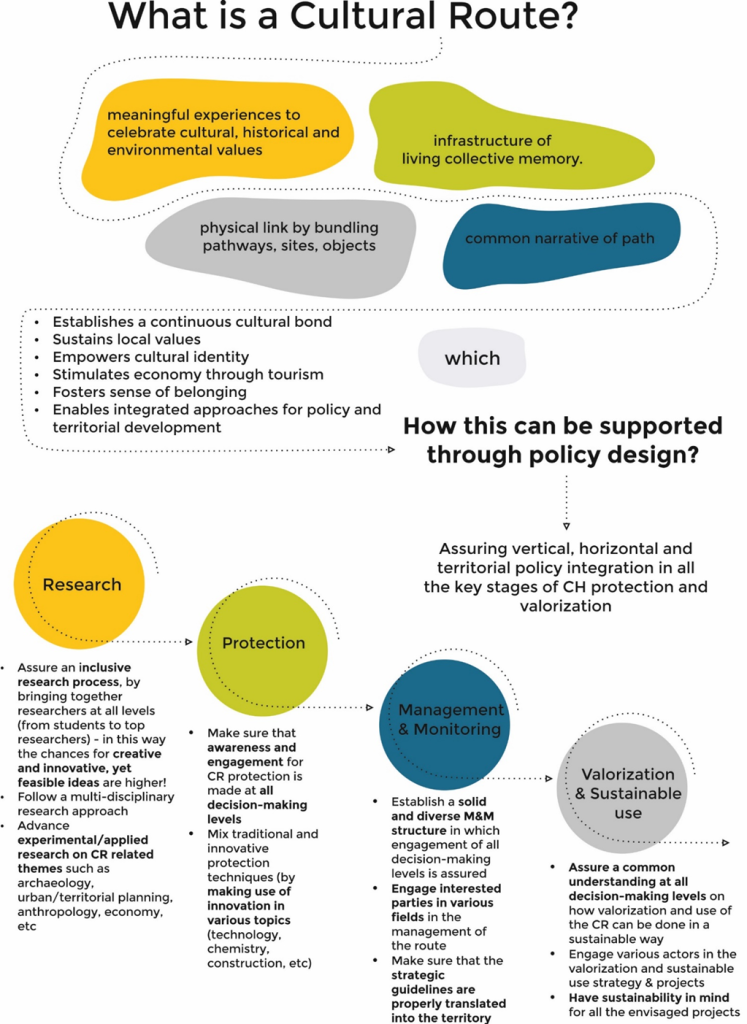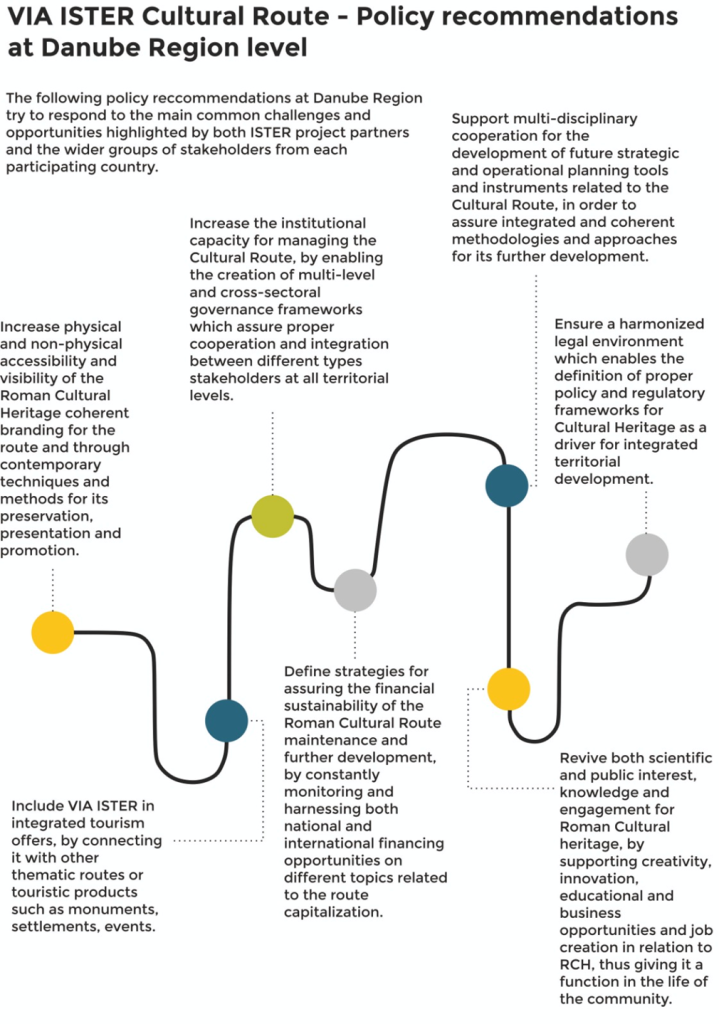ISTER Policy Handbook is out! See what’s all about below :
The aim of the ISTER Policy Handbook is to allow the sharing of the project’s findings to Danube Region similar territories, as well as to wider interested communities at the EU level. The lessons learned are formulated in such a manner to cover the following sectors: (1) Policy integration, (2) Policy design, and (3) Policy Communication.
Policy Integration. In order to achieve the envisioned objective and set the ground for defining the final roadmap, was essential to review the regulatory environment and existing good practices in the partner countries as well as at the European level. In this chapter, the main findings of the desk-research activity within the ISTER project are presented, highlighting the importance of cooperation between different sectors and decision-making levels and their potential territorial effects.
Policy Design. This chapter identifies specific challenges and opportunities in the protection, preservation, management, and sustainable use of RCH legacy in each ISTER country, based on which a specific set of policies was formulated together with the general overview of the current situation in the Danube Region.
Starting from defining the main characteristics and the envisioned impact of a Cultural Route, the proposed roadmap at the end of the chapter provides step-by-step guidance on how they can be supported effectively through policy design, namely by considering vertical, horizontal, and territorial policy integration in all the stages for CH protection and valorization. Having this in mind, and by leveraging also on the in-depth context analysis conducted in each partner country, the chapter ends by proposing 7 policies at the DR level, related to more effective governance, better accessibility, and visibility of RCH, a harmonized legal environment, multi-disciplinary cooperation, integrated approaches for the route development and financial sustainability of the route.
Policy Communication.
Last but not least, the Policy Communication toolkit elaborates on the stakeholder engagement and endorsement of policy recommendations of the ISTER project, as well as on future steps for a more in-depth collaboration at the DR level, which could be achieved through the establishment of a transnational association. The chapter presents the key steps to be followed for a successful engagement in further policy elaboration, as well as the vision, main goals and potential transnational and national governance structure of the ISTER association.
Find the entire publication here:
Source of pictures: Urbasofia. Chapter 2.4. Roadmap for effective policy design for the valorization of Roman Heritage legacy within EU transnational cooperation. Sustaining a transnational Cultural Route


